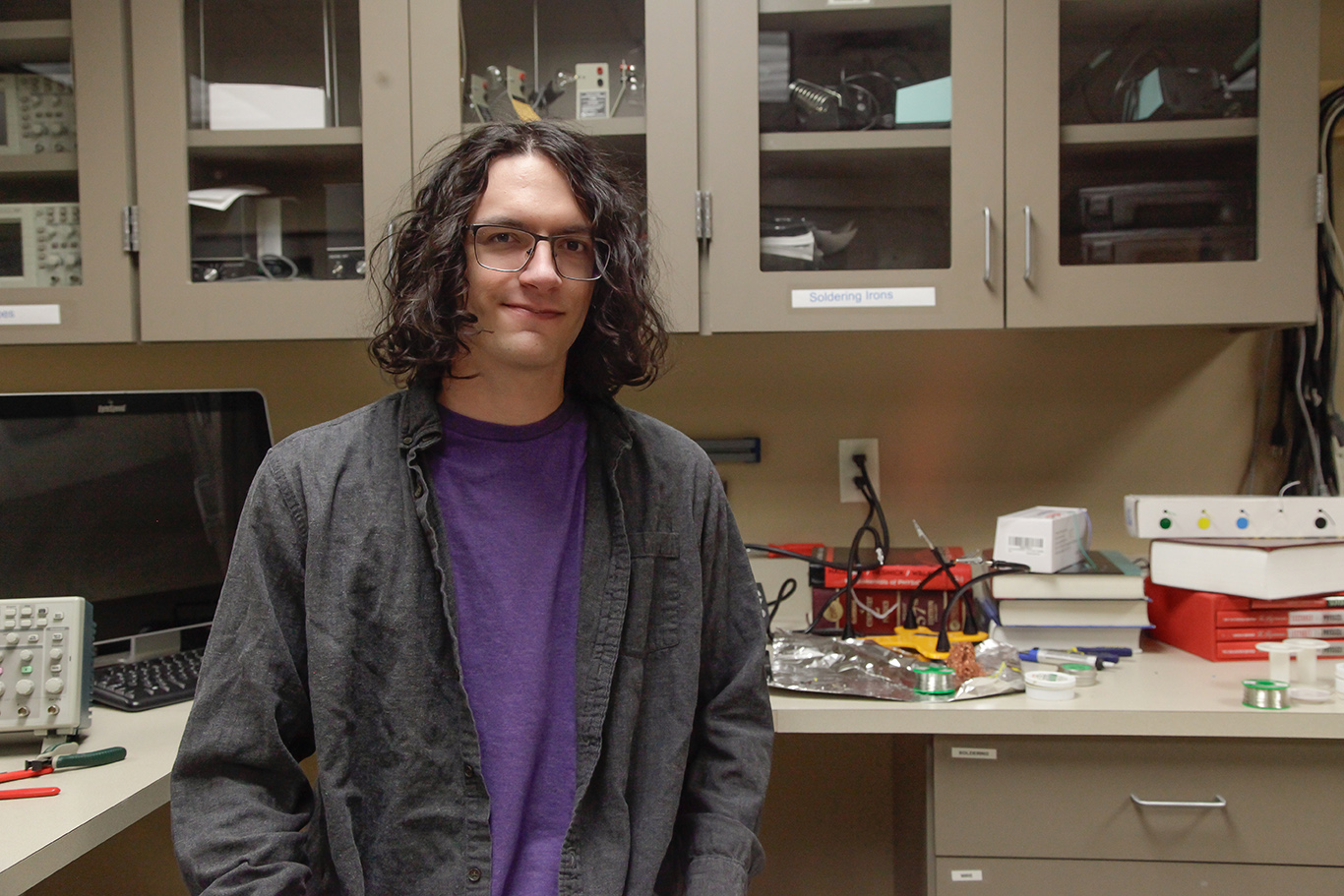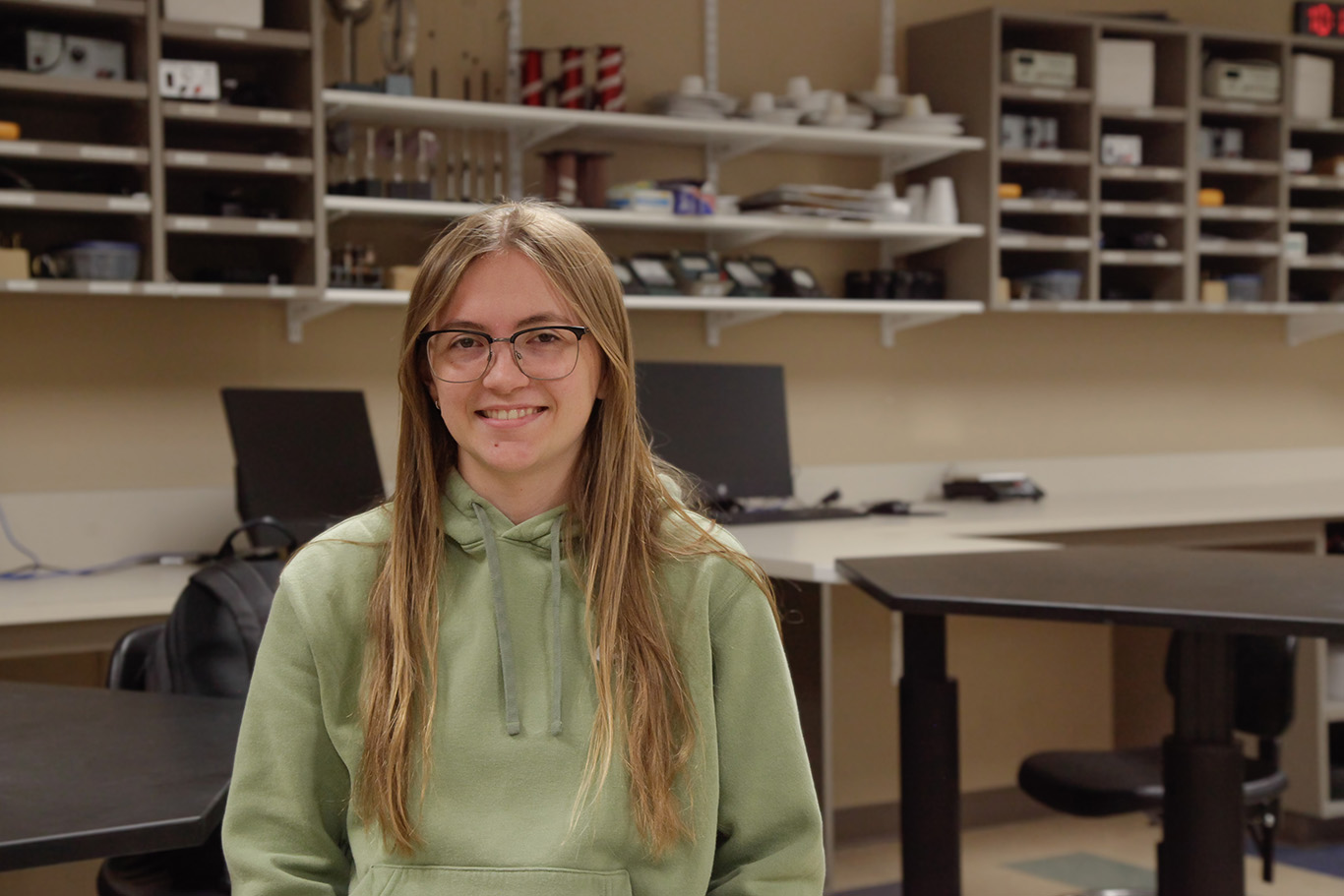Physics
A BS degree in Physics from Minnesota State University Moorhead helps you to understand how the world works by developing your expertise in quantitative analysis, modeling techniques, computational programming and problem-solving. These skills are applicable to a wide range of careers in computer science or information systems, engineering, healthcare, energy and more. The degree is also outstanding preparation for advanced study in many scientific and engineering fields.
Everyone knows you by name in the Physics and Astronomy Department. Courses average 13 students, ensuring you plenty of individual attention and mentoring from faculty members who are not only master teachers, but also respected scholars in their fields of expertise.
The Physics curriculum teaches and reinforces skills critical to a variety of enterprises that will help you to be successful. Computational methods are integrated throughout our innovative curriculum to develop your expertise in three core areas:
Physics: Develop programming, instrumentation and quantification skills that are useful in science and industry.
Communication: Develop and practice communication skills in writing and oral presentation that teach you to present complex ideas clearly and effectively.
Teamwork: Develop effective collaboration skills in and out of the classroom through research groups or other student teams.
You have the opportunity to work with faculty to apply your knowledge and deepen your understanding. Learn how to run an atomic force microscope, do nuclear magnetic resonance research with a faculty member using our 2-Tesla machine to probe matter, work with medical physicists at Sanford Health, explore the universe using the Paul P. Feder Observatory or design a simulated tide pool for the Biosciences department. These are just a few examples of actual past MSUM student activities. What will you do?
As the only astrophysics program in the Minnesota State system and the Fargo-Moorhead area, you will enjoy full access to the Paul P. Feder Observatory at the MSUM Regional Science Center. The Observatory houses a 16-inch cassegrain reflecting telescope that is so powerful you can see a candle flame 100 miles away. The Observatory and Science Center are used for undergraduate college instruction, research and public programs.
The heart of MSUM’s Planetarium is an Elumenati digital projector with UniView data visualization software. The result is a multimedia presentation that awes, amazes, entertains and educates viewers of all ages. Not only will you be able to enjoy the many shows offered year-round, you could possibly work in the Planetarium. Students have a hand in creating and presenting shows as well has helping with special events and special topics. Opportunities abound for creative and scientific minds alike.
The Physics and Astronomy Department offers you the opportunity to be a Learning Assistant for courses you have already taken. It’s a competitive selection process and a privilege that not only deepens your topic knowledge but provides valuable experience communicating science.
You will quickly learn that faculty-student engagement is the hallmark of an MSUM Physics major, whether you’re conducting research, attending conferences or participating in outreach activities.
You might also be interested in…
Physics Education | Environmental Studies | Engineering Physics | Mathematics | Chemistry | Computer Systems Information Systems | Geosciences | Biosciences
MSUM’s physics program develops your math, modeling, computational and problem-solving skills applicable to a wide variety of careers. Here is just a sample of high-paying physics careers that are predicted to experience job growth through this decade.
What are some Common Physics Related Careers?
| Career | Job Growth (2021-2031) | Median Pay |
|---|---|---|
| Aerospace Engineer | 6% | $122,000 |
| Medical Physicist | 8% | $147,000 |
| Product Engineer | 2% | $152,000 |



